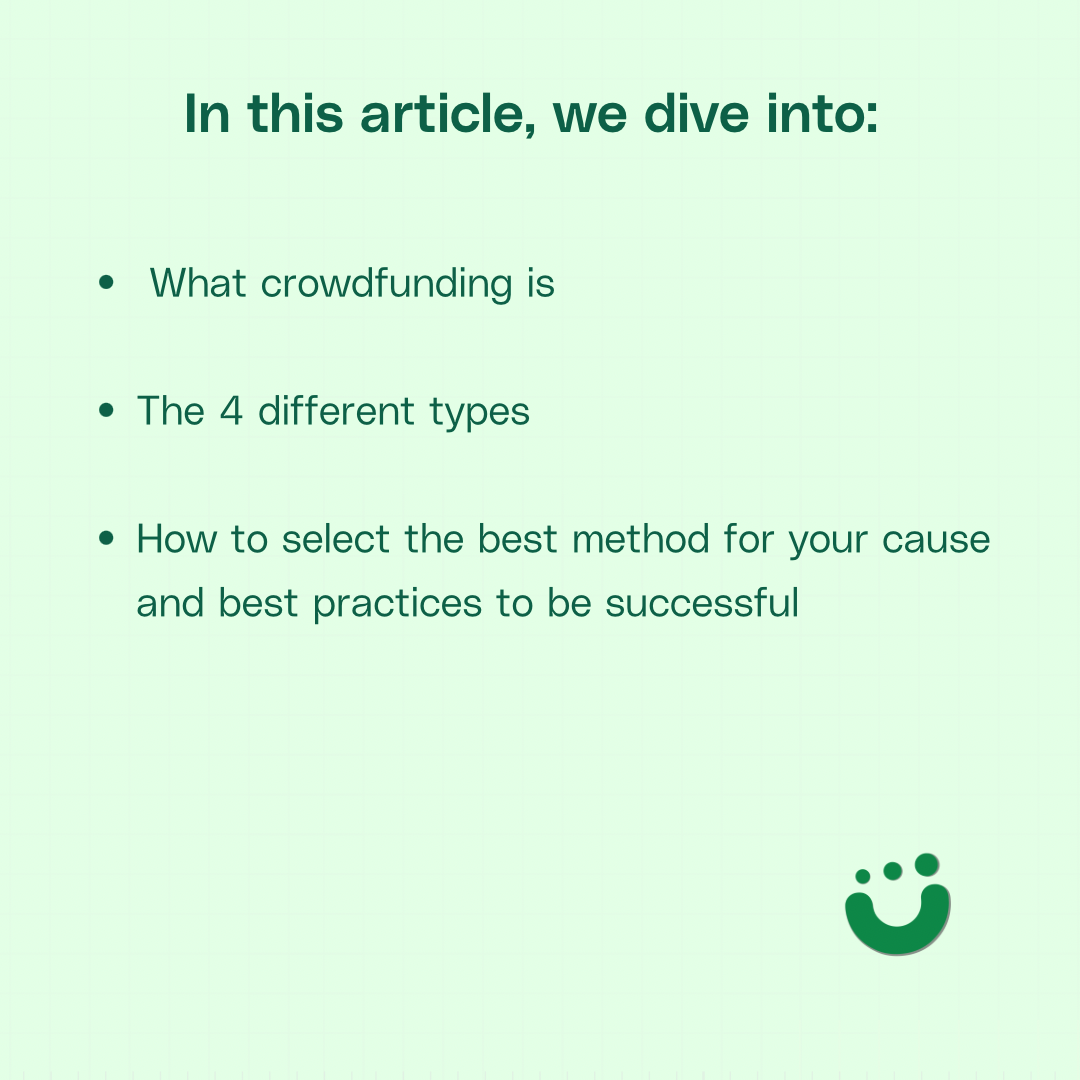How to Crowdfund for Your Business
The 4 crowdfunding models and how to select the best one for your non-profit, startup or social venture.

Crowdfunding for social impact projects has become incredibly commonplace. The global crowdfunding market is currently valued at 1.41 billion USD and is expected to double its size by 2030.
Being able to garner support from most abundant resource: people, has helped non-profits and social ventures gain access to more funds and more people. However, every successful crowdfunding campaign begins with selecting the appropriate crowdfunding model.

Crowdfunding (n.)
Crowdfunding is using online platforms to raise money through the efforts of individual contributors. People give willingly to support a social cause, an individual in need, or a business.
Now, the 4 models:
Reward-based crowdfunding
Here, people contribute (usually a predetermined amount) in exchange for a reward. The reward is usually a product or service that the campaigner offers.

Reward-based crowdfunding is typically used by startups that are just entering the market. It allows them to raise funds and introduce their offering to the market at the same time.
You can tailor reward-based crowdfunding to fit the needs of your non-profit project. For example, the reward for a children's outreach could be cards handmade by the children.
Equity-based crowdfunding
Here, each contributor receives a small share of your company. Typically, the shares are non-voting so you can retain decision-making authority. Businesses in high-growth industries like technology typically use this approach. They have more room to deliver on promised dividends.
Donation-based crowdfunding
Here, contributors donate money to projects because they want to support a cause that resonates with them. They don't expect any financial or material rewards. The feeling of making a positive impact suffices.
Donation-based crowdfunding is by far the most popular model, especially for individuals in need and non-profits. There's no predetermined amount so each person can give as much as they are capable of.

Debt-based crowdfunding
This model is also called "social lending" or "peer-to-peer lending (P2P)". With debt-based crowdfunding, you get a loan from a crowd of funders. You then pay back the loan over an agreed-upon duration.
P2P loans may require collateral or be unsecured. Depending on the platform or reason for seeking a loan, the funds raised may or may not attract interest rates. In any case, the interest rates are typically low.
On Crowdr, the GoFundMe for Africa, you can run any type of crowdfunding except equity-based.
What model is best for your non-profit or social venture?
If you are crowdfunding a project for your non-profit, the donation-based model should likely be your first choice. Since your organization is not profit-oriented, the others would be tricky to adopt. You are not making a profit from the project so you can not provide financial or material returns.
Your next best choice would be the rewards model. Now, the success of reward-based crowdfunding for non-profits rests on the rewards strategy. Keep in mind that a high-value reward need not be expensive.
Social ventures combine both social good and profitability. Therefore, you can apply any of the crowdfunding models depending on your value proposition and business needs.
